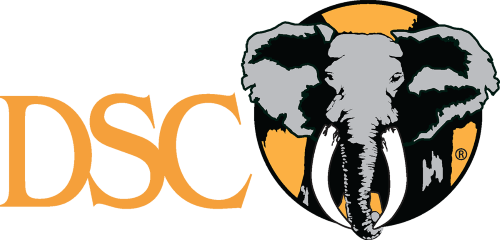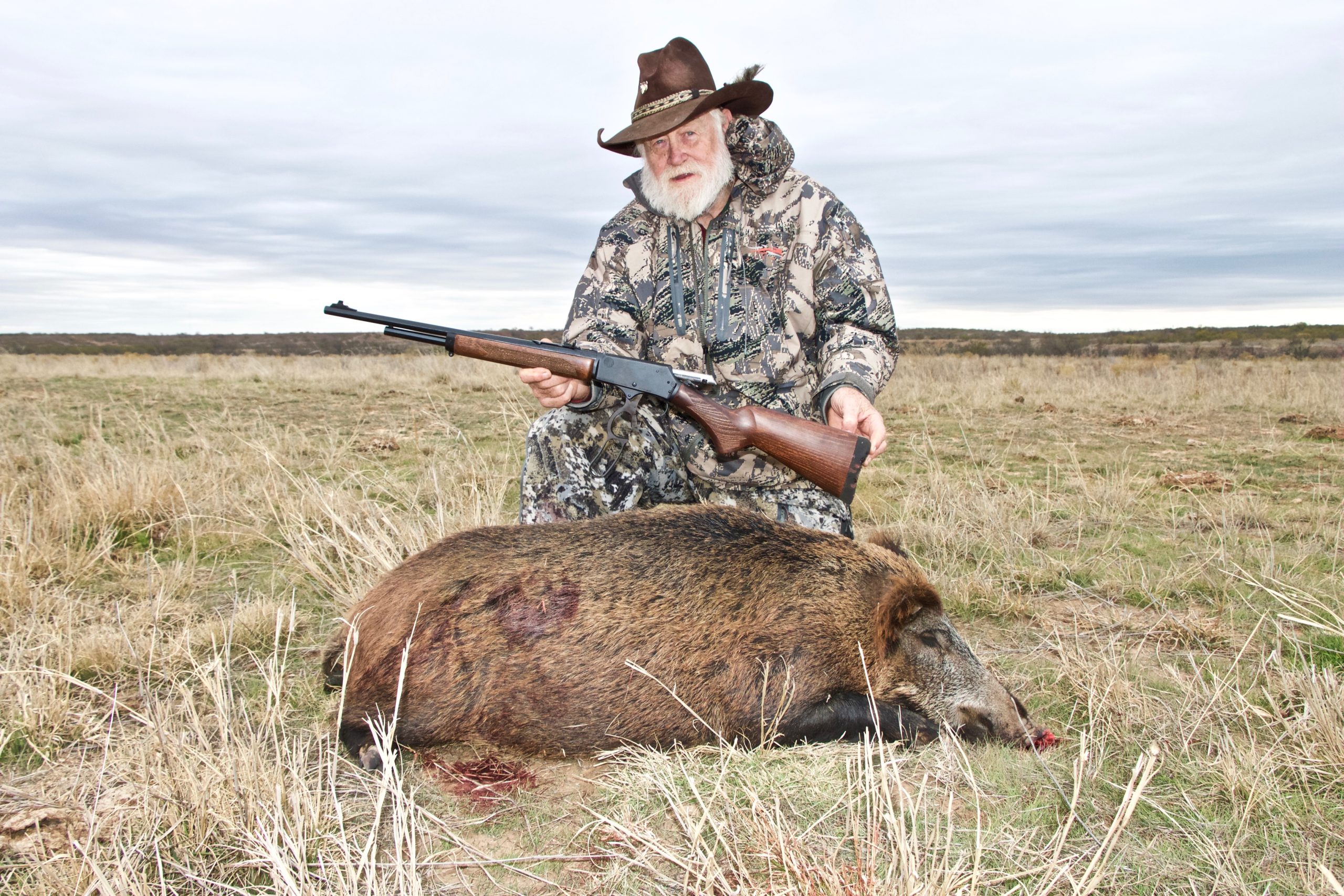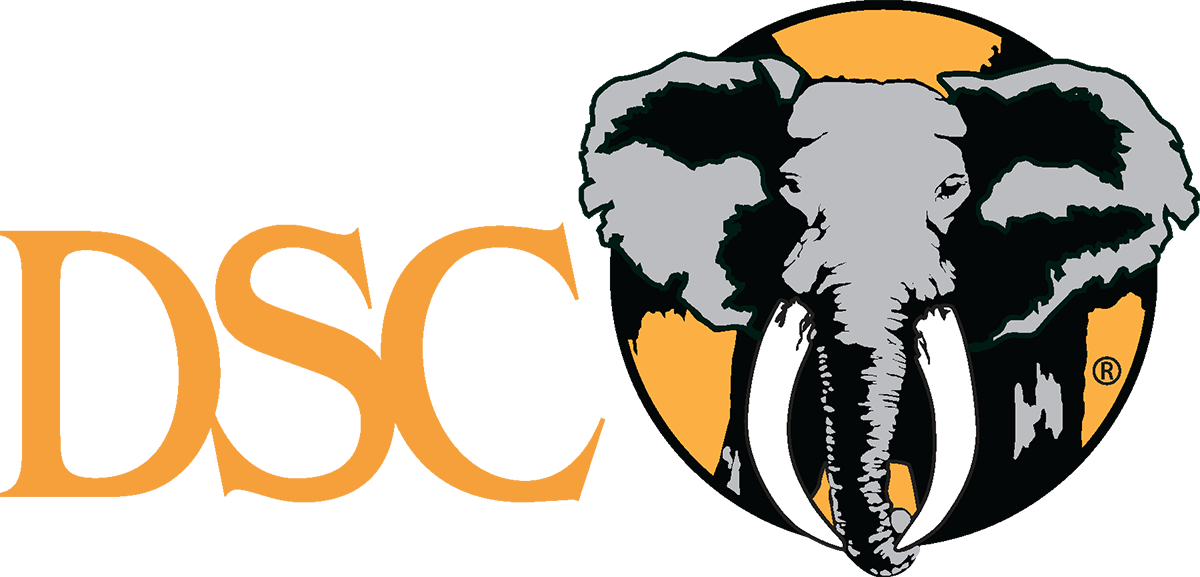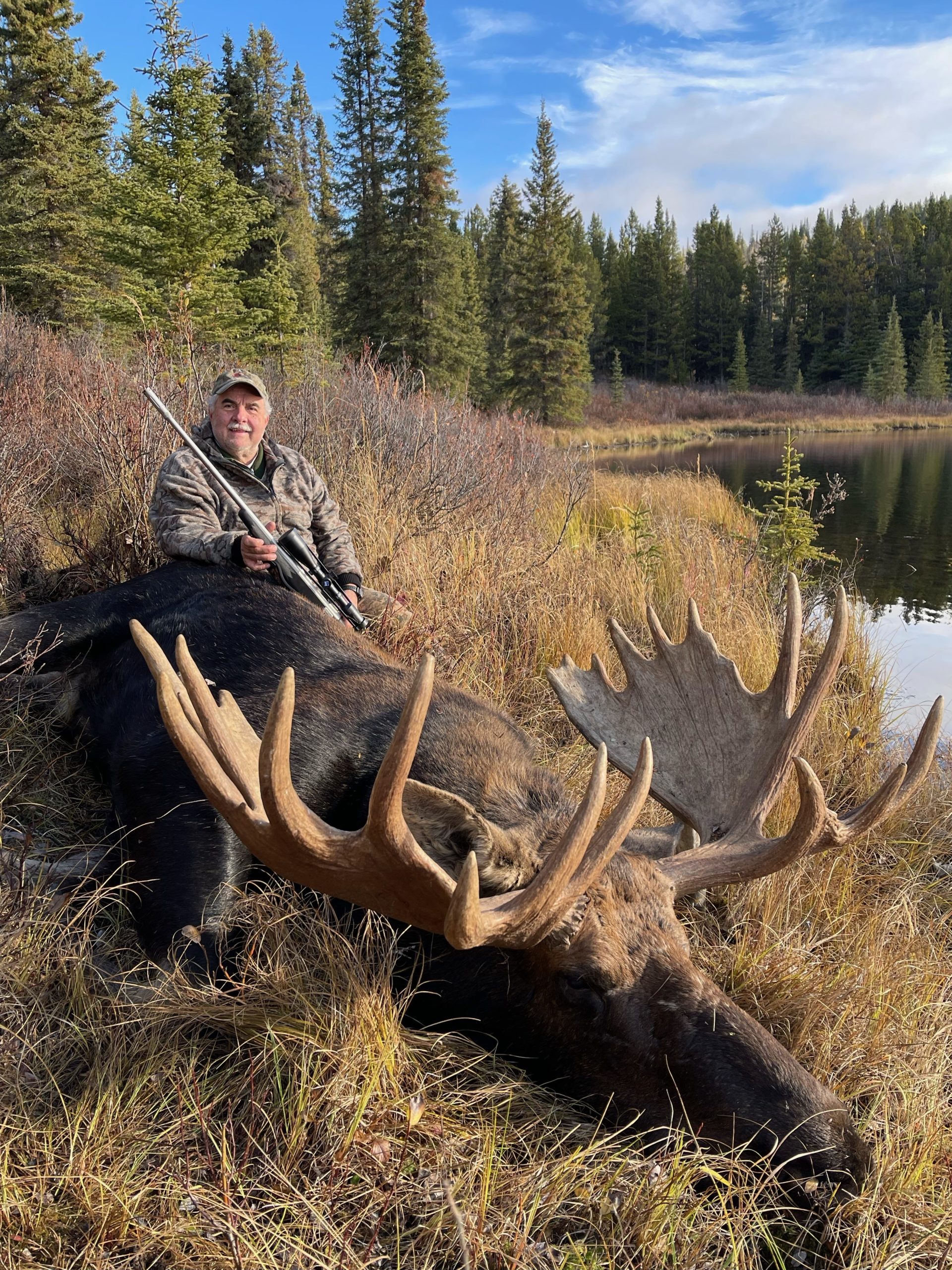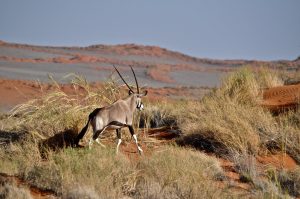 “Not going to get closerrr! Too many eyes and not enough coverrr. Can you take him for herrre?” questioned Fred Burchell. Before I could answer, he added, “The bull on the farrr left. His horrrns are at least 38. The big cow rrright in the middle is about 42. Want to leave herrr as a brrreederrr. Shoot the bull!” I nodded and centered the crosshairs on the bull’s broadside chest.
“Not going to get closerrr! Too many eyes and not enough coverrr. Can you take him for herrre?” questioned Fred Burchell. Before I could answer, he added, “The bull on the farrr left. His horrrns are at least 38. The big cow rrright in the middle is about 42. Want to leave herrr as a brrreederrr. Shoot the bull!” I nodded and centered the crosshairs on the bull’s broadside chest.
We were on Fred’s expansive property in north central Namibia culling gemsbok oryx. Upon my arrival Fred asked me to help remove some cows but also bulls that did not come to the standard he was looking for in the herds that lived on his property. It was an invitation I greatly appreciated and gladly accepted.
“How far?” I questioned as I got into a comfortable prone shooting position. Fred suggested he the bull was right at 400 yards away. I knew the .30-06 I was shooting at the time, sighted in with a Hornady 165-grain would drop about 26 inches at that distance. I raised the crosshairs about 12- to 13-inches above the top of the bull’s broadside back. There was no breeze. Took a deep breath, let it all out then gently squeezed the trigger. At the shot the bull bucked, kicked high, then took off running. I chambered another round and got back on target and was about the squeeze the trigger on a running target, when he fell. I stayed on the bull for another near minute, ready to shoot again if the bull tried to get back on his feet. He did not.
Several minutes later we quickly photographed the bull then loaded him and started toward the property’s headquarters where the meat from gemsbok would be properly cared for. “The boys will save the skull forrr you! I plan on you shooting some morrrre. Yourrr name is on the perrrmit that will allow you to cull and shoot severrral on my properrrty,” said my old friend.
As we sat around the mopane wood fire that night I recalled my first safari which I had done with Frontier Safaris owned by Fred’s son Barry. On that hunt I had taken my first gemsbok, that one a long-horned cow. I had shot it with a friend’s .30-378 Weatherby Magnum after a long, though fun, stalk.
Since that Eastern Cape of South African safari I had hunted Africa numerous times, including several trips with Barry’s father, Fred. I ended up shooting numerous gemsbok on the Burchell property – both bulls and cows. Most they were shot with either a .30-06 or .338 Federal, which was “brand-new” back then. I was impressed at how the latter round worked on tough and tenacious African antelope.
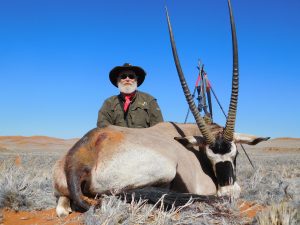 After several days of primarily culling gemsbok, as well as a few springbok, said Fred, “A frrriend has invited us to the rrrred sands of the Kalaharrri. We leave tomorrrow.” At that point I had not yet seen the red sands. Sounded perfect to me.
After several days of primarily culling gemsbok, as well as a few springbok, said Fred, “A frrriend has invited us to the rrrred sands of the Kalaharrri. We leave tomorrrow.” At that point I had not yet seen the red sands. Sounded perfect to me.
The drive was long but fun, listening to Fred regale stories of past hunts. A quick night in camp and we met the local rancher, who immediately loaded me into what back home we would have called a “dune buggy.” Then I learned how the locals “hunted” gemsbok, chasing them and then shooting them. We chased several but thankfully I never got a shot. I was probably holding on for dear life when there might have been an opportunity.
That afternoon Fred and I hunted on our own, spot and stalk. Late in the afternoon we spotted a small herd. One was an ancient cow, bordering on being “skinny,” something very seldom seen among gemsbok. “Lawrrreee, she’s not 40 but close… She is ancient! You should take herrr!” I followed Fred’s advice and a little while later we loaded her for the trip to camp.
Fast forward to other hunts for gemsbok this time with Corne Kruger and his various PHs’ but still in Namibia. After several trips to what used to be known as German Southwest Africa, I fell heads and heels in love with that country. Over a 21 period during which I hunted Africa quite frequently, I returned many times to Namibia to hunt her bountiful game; elephants, hippo, buffalo, leopard, eland, kudu, gemsbok on down to wart hog and numerous species in between. Always there were gemsbok which were not only fun to hunt, were truly impressive and challenging, and absolutely delicious table fare, no matter how it was prepared.
One of my most enjoyable and fun gemsbok hunts in Namibia took place on the Namib Desert hunting with Corne Kruger. We camped in tents on the desert where dined on zebra fillets, kudu schnitzel, and gemsbok cutlets, among other most delicious game meat cooked over mopane coals. We hunted the steep canyon walls of the desert mountains for klipspringers, all the while looking for greater kudu reputedly living in the mountains. I was able to take an ancient klipspringer. We only found remains of kudu killed by leopards, no live animals. After several days of hunting and thoroughly enjoying the mountains we headed back to the sandy plains to hunt gemsbok.
Finding gemsbok was easy. Getting close enough for a shot not so. On that hunt I brought a .375 Ruger, shooting Hornady’s 300-grain DGX and DGS ammo. I had stated the hunt in the far northeastern part of Namibia in what used to be known as the Caprivi Strip, now known as the Zambezi Strip, hunting Cape buffalo. With it I felt comfortable taking the odd 500-yard shot, but beyond it would be questionable whether I could place a bullet in a 6-inch circle.
Corne and I were driving to an area where had been reported a 40+ inch gemsbok bull, the “Holy Grail of Gemsbokdom.” No sooner had we stopped to glass than we spotted “said monstrous bull!” Only problem was he was well over a thousand yards away. Hurriedly we planned a stalk. If all worked properly, we should be able to get within 500 or so yards of the monstrous bull.
We dropped behind a sandy ridge and took off at a run. Mind you running is not particularly easy in deep, loose sand. First time we popped up where we could again see the long-horn bull he had moved farther to our initial left and will still at least 700 yards distant.
After catching my breath, we again dropped below the sandy ridge, out of sight of the gemsbok and ran, if you call what I was doing running, on the backside of the ridge out of sight of the big bull, which had been joined by six cows, last time we had looked.
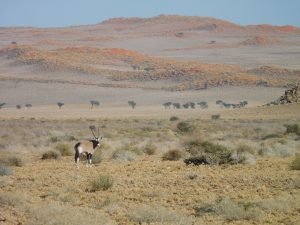 We had run another 300-yards angling to where we had last seen before we again peaked over the sand ridge. As we did the big bull with his cows started running directly away from us. Obviously simply doing what gemsbok do. There was no way we could have been smelled or seen.
We had run another 300-yards angling to where we had last seen before we again peaked over the sand ridge. As we did the big bull with his cows started running directly away from us. Obviously simply doing what gemsbok do. There was no way we could have been smelled or seen.
“Shoot at him anyway!” instructed Corne. “He’s right at 1200 yards.” At which I got into a prone position, raised the horizontal crosshairs a considerable amount, and pulled the trigger.
“Your shot is about 30 yards short. Try again!” I did just as the monstrously horned bull cleared the next ridge. “Well, you shot right where he was just before he disappeared!”
I had known my chances of hitting the big bull ere practically nil. Had I hit him, it would have indeed been a true miracle.
“Well now you can at least say you’ve shot at a 46-inch gemsbok bull!” said a smiling Corne Kruger!
Later that same day after “looking over” many, many gemsbok, I decided to shoot a bull that at first glance was 39 inches with very heavy bases. A truly great gemsbok any and everywhere else. I was thrilled with my gemsbok, in all likelihood the biggest gemsbok oryx bull I will ever take.
I did on that same hunt have an opportunity at was likely a 44 inch or longer cow. I could have taken her easily. In retrospect I probably should have taken her, but I kept thinking there might be another chance at the 46-inch bull. Alas that did not happen…
